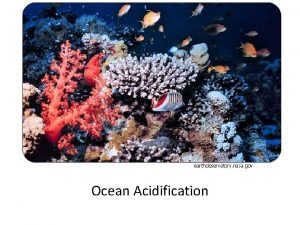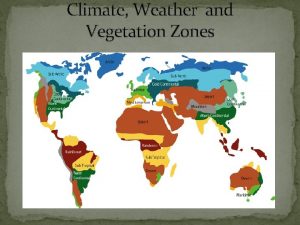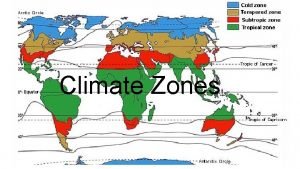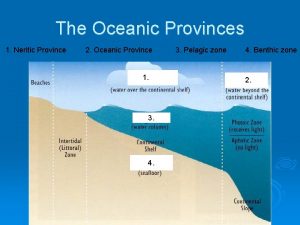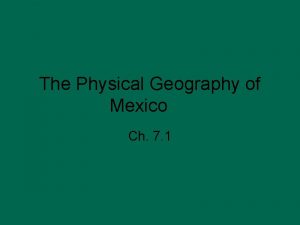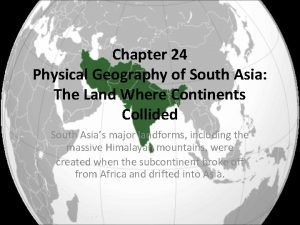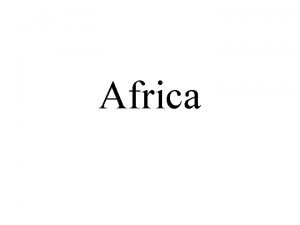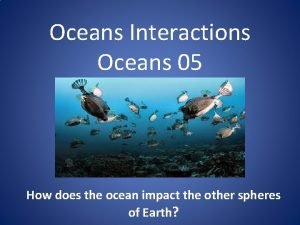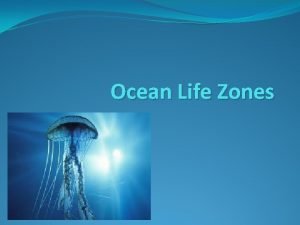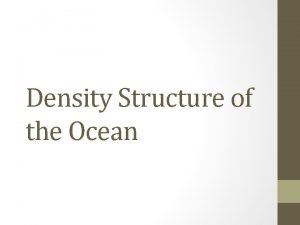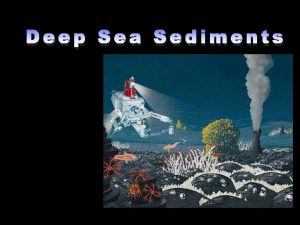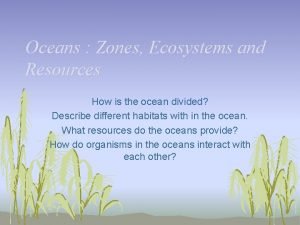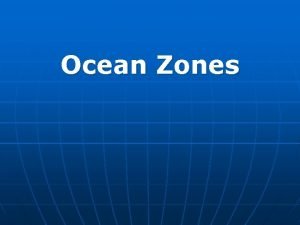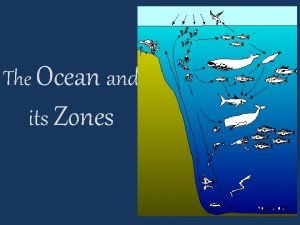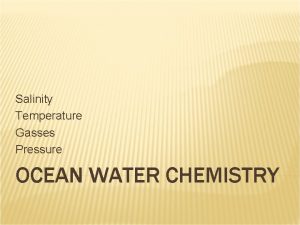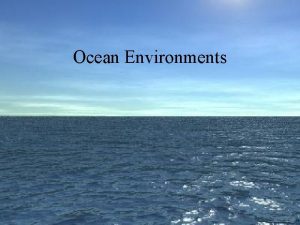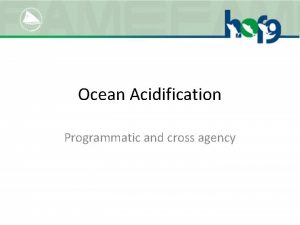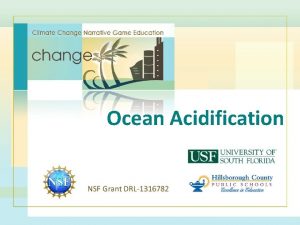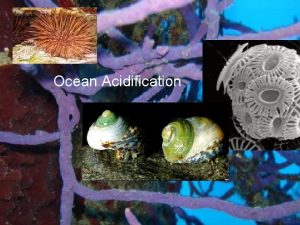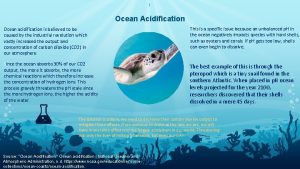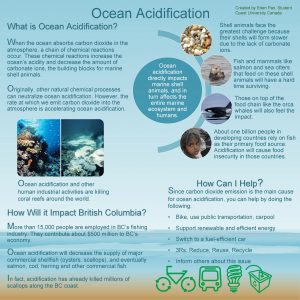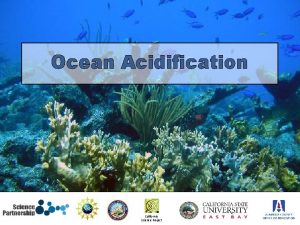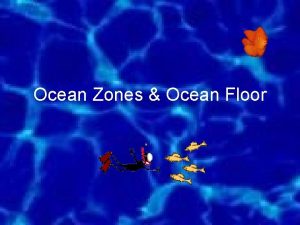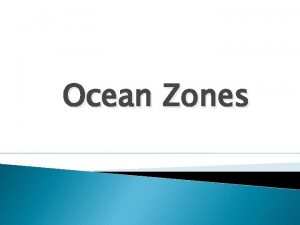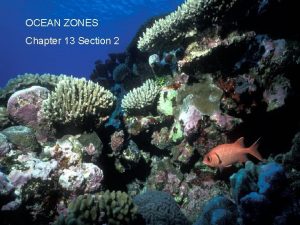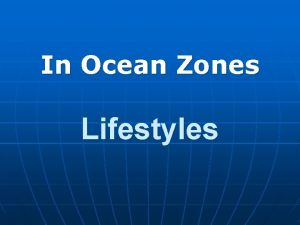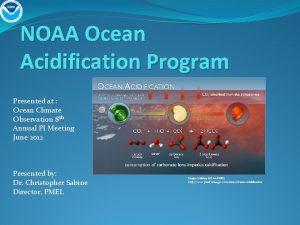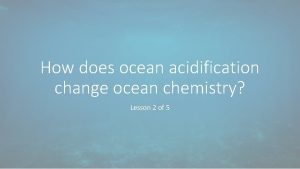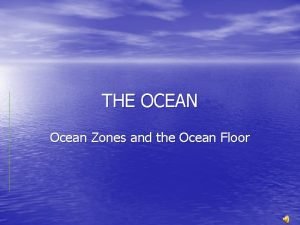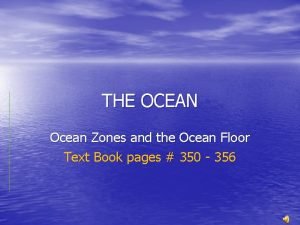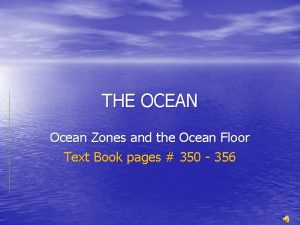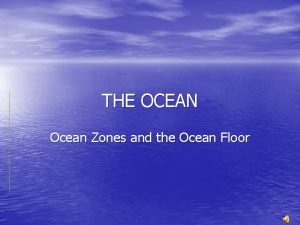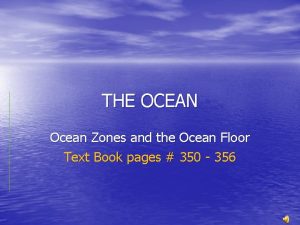Dead zones climate change and ocean acidification Fish





























- Slides: 29

Dead zones, climate change and ocean acidification Fish 323

Dead zones • Regions of very low oxygen also called hypoxic zones • Few forms of marine life can survive • In 2008 405 dead zones were identified world-wide • Are often ephemeral – they come and go • Causes: settlement of plankton to bottom where decay consumes most oxygen



Primary causes • Agricultural run off • Oregon: zones thought to be natural

The Black Sea • Extensive dead zones in the 1980 s • Fertilizer use declined dramatically with collapse of Soviet Union • By 1996 no dead zone found

The Louisiana dead-zone


Ecosystem consequences • Shifting distributions of mobile animals • Killing of less mobile species • Level of concern is subject to considerable debate

The “good” side of Dead Zones • Hypoxic zones have been with us for a long time – are the source of scale records used in paleo-ecological studies • Oil, gas and coal resources are the result of anoxia • Can be a potential site of carbon sequestration.

Climate change


Temperature Scenarios

Key impacts • Warmer (mostly) • Change in rainfall wetter some places, drier others • Sea level increase • Increased variability and storms • Increased CO 2 in ocean

Projected changes in temperature

Rainfall and runoff

Sea level rise



Tuvalu and Pacific Islands

Tuvalu will disappear

Impacts on fisheries

The debate • What can be done – Reduction in CO 2 emissions – Carbon sequestration • Ocean fertilization – Mediation – atmospheric shielding • The role of adaptation – How rapidly can plants and animals adapt – How rapidly can human society adapt

Ocean acidification


Consequences of acidification • coccolithophores, corals, foraminifera, echinoderms, crustaceans and molluscs cannot form calcarious structures • Decreased survival and reproduction of other animals

Coccolithophore • are single-celled algae, protists and phytoplankton belonging to the division haptophytes. They are distinguished by special calcium carbonate plates

The projections • Corals, etc will disappear leading to dramatic changes in marine food webs • But cocolithophores have become more abundant and heavier as oceans have warmed • How rapidly can species adapt to changing ocean acidity?

Summary re climate change • The major long term challenge in aquatic resource management • While there is much debate about magnitude of impacts it is safe to assume that things will change • There will be winners and losers
 Ocean acidification
Ocean acidification Ocean acidification
Ocean acidification One fish two fish red fish blue fish ride
One fish two fish red fish blue fish ride Climate change 2014 mitigation of climate change
Climate change 2014 mitigation of climate change One fish two fish blowfish blue fish script
One fish two fish blowfish blue fish script Scale types fish
Scale types fish Latitude climate zones
Latitude climate zones How do littoral zones differ from riparian zones?
How do littoral zones differ from riparian zones? Westernmost canadian vegetation region
Westernmost canadian vegetation region Climate and vegetation zones
Climate and vegetation zones Climate zones and weather worksheet answer key
Climate zones and weather worksheet answer key Oceanic provinces
Oceanic provinces Ocean and lake zones
Ocean and lake zones Many _____ people have settled in this megalopolis.
Many _____ people have settled in this megalopolis. Mexico climate zones
Mexico climate zones Latin america climate zones
Latin america climate zones Climate zones of asia
Climate zones of asia Climate zones in africa
Climate zones in africa Juan soriano la niña muerta; the dead girl; dead infant
Juan soriano la niña muerta; the dead girl; dead infant Hachetfish
Hachetfish Ocean zones graphic organizer
Ocean zones graphic organizer Make an ocean life zones foldable
Make an ocean life zones foldable Hydrosphere mind map
Hydrosphere mind map Ocean density zones
Ocean density zones 4 zones of the ocean
4 zones of the ocean 3 ocean zones
3 ocean zones Horizontal ocean zones
Horizontal ocean zones Midnight zone
Midnight zone Ocean light zones
Ocean light zones Oceanic divisions
Oceanic divisions

